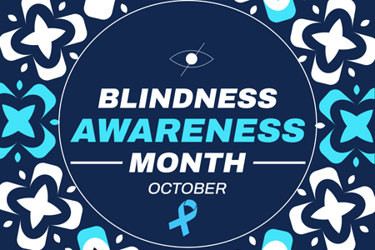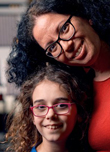Patients And Industry Need A New Model For Rare Disease Gene Therapy
By Silvia Cerolini

My daughter Vicky is 11 years old, and she is going blind. She has RDH12-associated Leber congenital amaurosis (RDH12-LCA), a rare genetic eye disease that causes progressive loss of vision in children. Most patients with RDH12 mutations begin losing sight in early childhood, with many having severe vision loss by their teens or twenties.
For my family, and for countless others, every month matters. We don’t have time to wait for the traditional drug development model to catch up to diseases deemed “too rare” to be commercially viable. As such, an accelerated development approach is required before it is too late for these patients and their families.
When The Science Is There But The System Fails
Gene therapy offers real hope for inherited retinal diseases (IRDs). In fact, a gene therapy for another form of LCA has already been approved. Yet for RDH12, despite strong scientific rationale, progress has stalled, not because the biology is impossible, but because the disease is considered too rare to attract traditional investment.
As families, we did everything asked of us. We raised millions of dollars, brought families together, convened scientists, and supported natural history studies. We helped remove barriers to translation. And still, no trial.
The pattern was painfully familiar: interest from companies that ultimately pulled away, citing the lack of commercial return. For families living with an ultra-rare disease, this cycle is devastating. Without investment, there is no trial. And without a trial, there is no hope for those that need it the most – the patients and their families.
A New Partnership Model
That’s why I’m proud that this summer, we reached a milestone: Opus Genetics and the Global RDH12 Alliance formed a strategic partnership to accelerate development of OPGx-RDH12, a gene therapy designed for patients with RDH12-LCA.
The Global RDH12 Alliance, which includes the RDH12 Fund for Sight in the U.S. and Eyes on the Future in the U.K. (the nonprofit organization I lead), has committed up to $1.6 million toward the program. Importantly, this collaboration is not a one-way donation. It includes a risk-sharing structure, shared governance and performance-based milestones, ensuring accountability and progress.
Together, families and scientists will co-develop the program, starting from development and agreement of the regulatory strategy to clinical trial design. Our shared goal: file with the FDA by late 2025 and with first patient being treated in 2026.
As I said when we announced the partnership, we are racing against time as our children’s vision continues to deteriorate. Partnering with Opus to bring this therapy into the clinic is an incredibly meaningful milestone. It shows what’s possible when patients and industry work together.
Families As Co-Developers, Not Bystanders
This partnership reflects a new model, one where patients are not just trial participants or donors but true co-developers of therapies. Families bring expertise and urgency that industry cannot replicate: lived experience, registries, network, clarity about what outcomes matter most and a strong voice to influence the ecosystem.
When patients are recognized as partners, the dynamic changes:
- Timelines accelerate because patents drive the focus on what really matters.
- Trials improve because endpoints reflect patient needs, not just regulatory defaults.
- Resources diversify through non-dilutive funding, reducing reliance on traditional venture capital alone.
- Trust deepens, with shared governance ensuring programs continue even if business priorities shift.
- Costs come down because patients constantly challenge traditional models to find more efficient ways of working.
- Innovation thrives because patients push everybody to think differently, break boundaries, and refuse to accept ‘no’ as an answer.
The RDH12 partnership is not just about one gene therapy program. It is a blueprint for rare disease drug development. Families affected by ultra-rare diseases often face the same systemic challenge: promising science but no viable business model.
By blending patient-led funding with industry expertise, and by sharing decision-making power, we can de-risk programs and bring therapies into the clinic faster. The key is fostering patient-led partnerships across the entire ecosystem — including regulators, academic centers, and other collaborators — and adopting innovative, efficient models across manufacturing, non-clinical, and clinical development. That means doing only what is absolutely necessary, avoiding wasted resources, and shaping risk-adjusted pathways that are truly fit for rare diseases and focused on what will truly move the science forward for patients. It is a model that can be replicated across other rare conditions, where the clock ticks just as urgently.
Professor Jean Bennett, a pioneer of gene therapy said: “With the understanding of how gene therapy works and the preclinical evidence so far, we see a clear path for its application to RDH12-LCA. This partnership is a critical enabler to accelerate the path to bringing this therapy to all of those in need.”
For families like mine, this is more than an academic exercise. Every month matters. Every delay costs children vision they will never get back. That urgency is why families are stepping into roles once reserved for industry, driving programs forward in ways that challenge the traditional boundaries of drug development.
But families cannot do it alone. We need scientists willing to partner, investors willing to embrace new models, companies willing to see the value of rare diseases, regulators ready to adopt frameworks for ultra-rare conditions, and governments to provide incentives to address rare disease inequality.
This partnership with Opus is one step forward, but the broader message is clear: patients are not passengers in rare disease drug development. We are drivers. Rare diseases are a gateway to the future of personalized medicine. This is about advancing science itself, and ultimately about all of us. Together, we can rewrite the model — so that “too rare” is never an excuse for inaction again.
Because for our children, the stakes couldn’t be higher. Their futures and their sight depend on it.
 About The Author:
About The Author:
Silvia Cerolini is CEO of Eyes on the Future, a nonprofit accelerating research on inherited retinal dystrophies that cause progressive sight loss in children.
